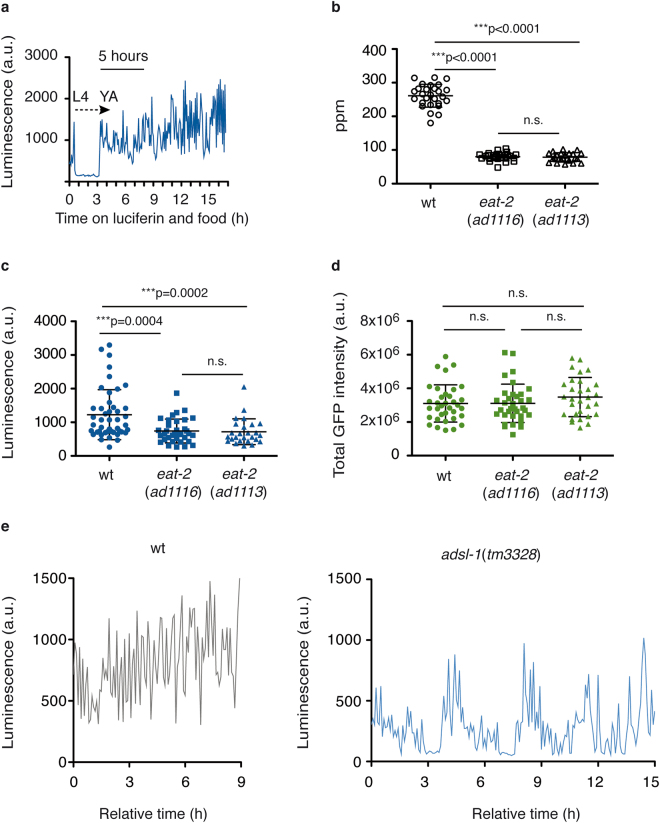Figure 1.
Luminescence signal reports food intake of single animals. (a) Bioluminescence signal from a single LUC::GFP transgenic animal over 17 h from the end of the L4 larval stage (t = 0). The absence of substrate intake during the molt provokes a decrease in the bioluminescence signal that resumes when animals exit the fourth molt and enter the young-adult stage (YA). The first 5-hour period of adulthood, used as a reference to calculate the mean value of the luminescence signal, is shown. (b) Pharyngeal pumping per minute (ppm) of wild-type, eat-2(ad1116) and eat-2(ad1113) mutant animals transgenic for LUC::GFP, at the YA stage. The graph shows data from two experimental replicates. (c) Mean luminescence signal of wild-type, eat-2(ad1116) and eat-2(ad1113) mutant animals transgenic for LUC::GFP, at the YA stage. The graph shows data from four independent experimental replicates. (d) Total GFP fluorescence intensity from wild-type, eat-2(ad1116) and eat-2(ad1113) mutant animals transgenic for LUC::GFP, at the YA stage. The graph shows data from one representative experiment out of three biological replicates. (e) Bioluminescence signal of wild-type and adsl-1(tm3328) mutant animals transgenic for LUC::GFP. A time interval within the L4 stage is shown. adsl-1(tm3328) signal exhibits interruptions and reduction in the luminescence signal compared to wild-type. The graph shows data from a representative well out of 21 animals assayed in three experimental replicates. Error bars show s.d. All experiments were done using strains carrying the integrated transgene feIs4.

